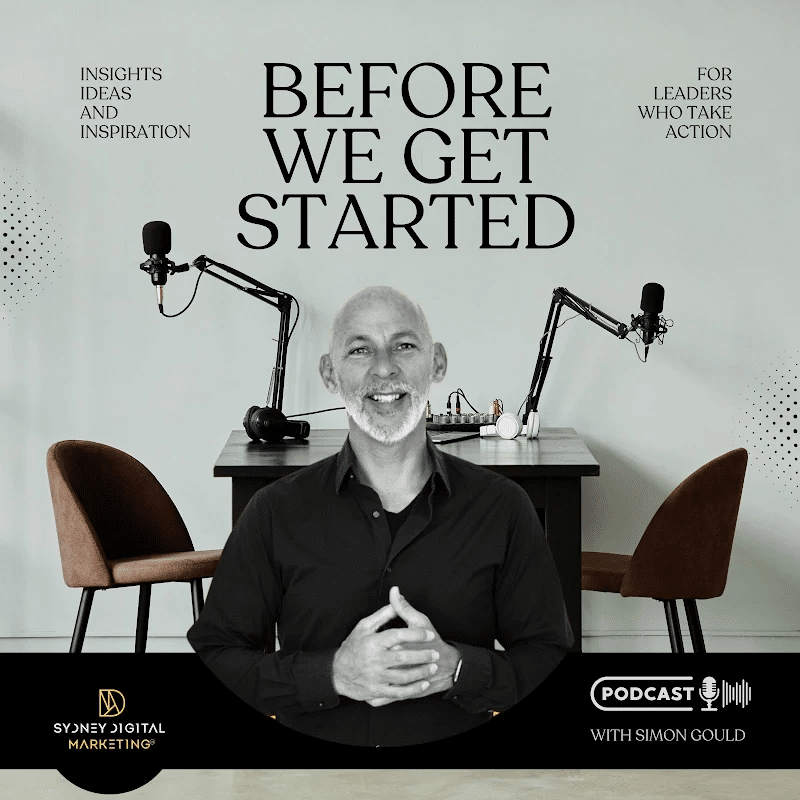
- Digital Strategy, digital marketing, Lead Generation
Recent articles
our mailing list
Marketing is Not Just a Cost, It’s a Strategic Investment

Let’s be honest, marketing often gets a bad rap. It’s seen as that one thing businesses reluctantly spend money on, hoping for the best but ready to slash the budget at the first sign of a rainy day. Yet, this view misses the big picture. Marketing isn’t just about spending money; it’s about setting the stage for your brand’s future success.
So, why do we so often see marketing as just another bill to pay? It’s a mix of tradition, misunderstanding, and maybe a bit of fear. But here’s the good news: this article is about to turn that misconception on its head. We’ll dive into why marketing is actually one of the smartest investments a brand can make. From building a loyal customer base to paving the way for your business’s growth, strategic marketing does it all. Ready to see marketing in a new light? Let’s get started.
It's Time to Rethink Marketing
Let’s get one thing straight: marketing is much more than just adverts and social media posts. It’s about creating stories that resonate, building relationships that last, and ultimately, driving the kind of growth that businesses dream of. But why do so many still view marketing merely as an expense? It’s because its benefits aren’t always immediate or easy to measure. Yet, those willing to look beyond the next quarter’s results will find marketing’s true value.
So, first thing let’s quickly go over some of the common misconceptions or reasons for why marketing is often overlooked by businesses.
- The Tangibility Trap: Marketing results can be harder to measure in the short term compared to direct sales or manufacturing output. This intangibility leads some to undervalue marketing’s contributions since it’s challenging to put a straightforward number on brand awareness or customer loyalty.
- The Myth of Instant Gratification: We live in a world of instant results. However, marketing, especially aspects like content marketing and brand building, often requires a long-term perspective. The slow burn of marketing success isn’t always appealing in a fast-paced business environment.
- Budgeting Blues: Marketing budgets are often the first to face cuts when times are tough. This is partly because marketing spend is viewed through the lens of a cost center rather than an investment. The perception that marketing is a luxury rather than a necessity can lead to its being overlooked.
- Misunderstanding Marketing: There’s a certain art to marketing that’s coupled with science. Some may not fully understand the strategic depth involved in marketing decisions, leading to its undervaluation. It’s not just about creating ads but about building relationships and understanding human psychology.
- Silos and Shadows: In some organisations, marketing operates in a silo, separated from other departments. This isolation can prevent the cross-departmental collaboration that showcases marketing’s full value, keeping its impact in the shadows.
- The Proof Problem: Demonstrating the direct ROI of marketing efforts can be complex and nuanced, especially with long-term brand building strategies. This difficulty in directly linking marketing activities to immediate sales can make its impact less obvious.

Building Long-Term Value
So now you know why marketing is often misrepresented or misunderstood, let’s focus on strategies to fix these issues, highlighting along the way why marketing is just so freaking important for you and your business to grow. Through strategic marketing efforts, a company can not only enhance its immediate sales and visibility but also establish a solid foundation for sustained growth and customer loyalty. Let’s delve into the elements that reveal the intrinsic value of marketing over time, with a focus on content marketing, brand building, and customer engagement.
Content Marketing: Educate, Engage, and Establish Trust
- Educational Content: By providing valuable information that addresses your audience’s questions and challenges, you position your brand as a trusted resource. This trust is the cornerstone of long-term customer relationships.
- Engagement Through Storytelling: Stories resonate. A well-crafted narrative can turn a cold lead into a loyal customer by connecting on an emotional level. It’s the stories people remember and share, far beyond the immediate sales cycle.
- SEO Benefits: Quality content boosts your search engine rankings, making your business more visible over time. This organic growth is a gift that keeps on giving, attracting new customers even without direct investment.
Brand Building: More Than Just a Logo
- Emotional Connection: A strong brand creates an emotional bond with its audience. It’s about making your brand relatable and memorable, which in turn, fosters loyalty and advocacy.
- Consistency Across Touchpoints: Consistency in messaging and visual identity across all platforms reinforces brand recognition. Over time, this recognition builds a sense of familiarity and trustworthiness.
- Differentiation: In crowded markets, a well-defined brand stands out. It’s not just about being different but about being meaningfully different in ways that matter to your target audience.
Customer Engagement: The Lifeline of Sustained Growth
- Listening and Learning: Engaging with customers isn’t just about pushing content or promotions. It’s about listening, gathering feedback, and adapting. This two-way communication strengthens relationships and builds brand advocates.
- Personalisation and Relevance: Marketing that addresses individual needs and preferences can significantly enhance customer satisfaction and retention. In the era of data, personalisation at scale is not just possible; it’s expected.
- Community Building: Creating spaces for your customers to connect with each other and with your brand turns casual customers into a community. This sense of belonging can dramatically increase customer lifetime value.
Aligning for Success: Combining Marketing and Business Objectives
Aligning your marketing and business objectives is crucial, but it’s not easy. So, we’ve come up with some easy to adapt strategies and tips to fine-tune this alignment:
Start With Clarity
First things first: clarity is non-negotiable. Understand your business objectives inside out. Whether it’s breaking into new markets, deepening customer loyalty, or launching a groundbreaking product, knowing these goals helps tailor your marketing strategy to be as effective as a Swiss Army knife.
Foster Collaboration
Break down the walls between departments. Encourage ongoing dialogue between marketing, sales, product development, and customer service. This integrated approach ensures marketing strategies are informed, holistic, and directly contributing to your business’s broader ambitions.
Leverage Data Wisely
Use market research to navigate and shape your marketing strategies, ensuring they resonate with your target audience’s current needs and desires. Implement analytics tools to measure success and adapt strategies in real time, keeping you on the surest path to achieving your business objectives.
Embrace Flexibility
The business landscape shifts quicker than the sands of the Sahara. Stay adaptable, ready to pivot your marketing strategies in response to new insights, market changes, and emerging trends. This agility allows you to maintain alignment with your business goals, even as they evolve.
Regular Review and Adjust
Make regular assessments of how well your marketing efforts are aligning with and advancing your business objectives. Use these check-ins to fine-tune or overhaul strategies that aren’t delivering the expected results. It’s all about continuous improvement and recalibration to ensure every marketing effort is a step closer to your business milestones.
The Numbers Game: Embracing Data-Driven Marketing
The era of guesswork and intuition-based strategies has given way to an age where analytics, data, and a clear understanding of return on investment (ROI) govern the efficacy of marketing efforts. Utilising sophisticated analytics tools allows marketers to closely track the performance of their campaigns and understand customer behaviour with an unprecedented level of detail. This wealth of data enables businesses to fine-tune their strategies in real-time, ensuring that they’re always aligning with the most effective pathways to engage their audience and achieve their marketing objectives.
Moreover, making informed decisions based on solid data analysis ensures that marketing investments are allocated toward the activities most likely to yield high returns. Understanding the financial impact of these efforts is crucial, not only for justifying marketing spend but also for securing the necessary budget and support from broader organisational leadership. The ability to demonstrate a tangible ROI from marketing activities strengthens the case for marketing as a central pillar of strategic business growth, rather than a peripheral expense.
- Leverage Analytics: Implement advanced analytics tools to monitor campaign performance and customer engagement in real-time.
- Data-Informed Decisions: Prioritise marketing channels and initiatives that the data shows are most effective, optimizing budget allocation.
- ROI Calculation: Develop a robust framework for calculating the return on investment of marketing activities, providing clear evidence of their value to the business.
Embracing a data-driven marketing approach is not just about adopting new tools or technologies; it’s about fostering a culture that values evidence over assumption and is always ready to adapt based on what the numbers reveal. This approach is instrumental in navigating the complexities of today’s marketing landscape, enabling businesses to move forward with confidence and clarity.
Making It Work for You: Actionable Steps to Leverage Marketing in Your Business
To propel your marketing forward, start with these foundational steps:
- Set Clear Objectives: Define your campaign’s success criteria. For instance, you might aim to increase website traffic by 10% within six months through inbound marketing to achieve a specific revenue target. Clear, measurable objectives are essential for tracking progress and guiding your efforts.
- Invest in Research: Deeply understand your audience. Utilise analytics and market research to gain insights into what your target consumers need, want, and value. This informed approach allows you to tailor your marketing messages for maximum resonance and engagement.
- Track and Measure: Employ analytics tools to monitor your campaigns and refine strategies based on performance data. Regular assessment against KPIs (Key Performance Indicators) enables ongoing optimization of your marketing efforts for better results.
Social Media Engagement: Track likes, shares, comments, and follower growth rate to gauge your content’s resonance.
Email Engagement: Monitor open rates, click-through rates, and conversion rates from email campaigns.
Content Engagement: Measure page views, time on page, and bounce rates for content pieces to understand audience interest.
Customer Retention Rate: Calculate the percentage of customers you retain over a specific period.
Repeat Purchase Rate: Identify the proportion of customers who make more than one purchase.
Customer Reviews and Testimonials: Monitor the volume and sentiment of customer reviews and testimonials.
Brand Advocacy Mentions: Measure how often and in what context your brand is mentioned by advocates on social media and other platforms.
Using SMART Objectives in Marketing
When it comes to crafting a marketing strategy that delivers tangible results, setting clear and effective objectives is paramount. This is where the SMART framework comes into play. SMART is an acronym that stands for Specific, Measurable, Achievable, Relevant, and Time-bound, and it provides a comprehensive guide for setting objectives that are clear and attainable within a specific timeframe.
The beauty of the SMART framework lies in its ability to transform vague intentions into actionable and quantifiable goals. By defining objectives that are Specific, you eliminate ambiguity and ensure that everyone involved has a clear understanding of what needs to be achieved. Making objectives Measurable allows you to track progress and adjust strategies as needed, ensuring that goals are not just met but exceeded. The Achievable aspect encourages realistic goal-setting, pushing teams to stretch their capabilities while still remaining within the realm of possibility. Relevance ensures that the objectives align with broader business goals and contribute to the overall success of the organisation. Lastly, setting a Time-bound deadline creates a sense of urgency and focus, driving teams towards achieving the objectives within the stipulated period.
Now, with a deeper understanding of what SMART objectives entail and why they are crucial, here are detailed examples to guide the setting of your own marketing goals:
Specific
“Increase the number of inquiries from our marketing communications efforts by 15% by the end of October this year”.
Measurable
“Achieve a 10% increase in traffic from key channels or countries within two years”.
Achievable
“Increase monthly active users (MAU) of our web tools from 750,000 to 1.2 million by the end of the year”.
Relevant
“Boost annual recurring revenue (ARR) from $104 million to £120 million by the end of the year”.
Time-bound
“Double our website’s traffic within the next 10 months by writing top-quality blog posts that educate and provide solutions to our readers”.
Incorporating SMART objectives into your marketing strategy not only ensures that your goals are clearly defined and attainable but also provides a structured approach to measuring success and ROI. For comprehensive insights and further examples on crafting effective marketing objectives, exploring resources from platforms like Ahrefs, and Smart Insights can be immensely beneficial.
Wrapping Up
Marketing isn’t just about spending money; it’s about investing in your brand’s future. By aligning your marketing strategies with your business goals and continuously adapting to the ever-evolving digital landscape, you position your brand for success.
If you’re looking to refine your marketing strategy for 2024 and beyond, contact us today. Whether you’re reassessing your budget or seeking the expertise of a marketing agency, reaching out for help can enhance your approach and outcomes. Let’s make your marketing efforts count.

Article by
Simon Gould
CEO / Founder / Dad
Founder and leader, Simon established SDM back in 2012. Since then, he has helped 150 clients (and counting) to achieve their digital goals.[…]

Article by
Simon Gould
CEO / Founder / Dad
Founder and leader, Simon established SDM back in 2012. Since then, he has helped 150 clients (and counting) to achieve their digital goals.[…]



